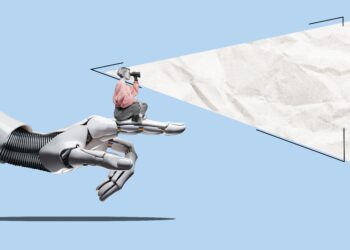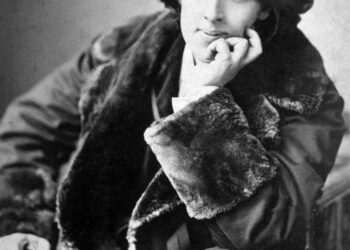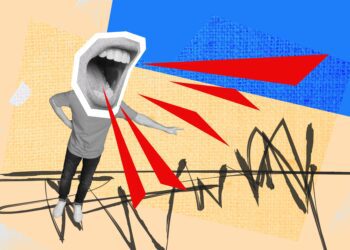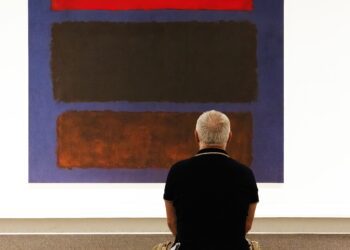“I’m a business man not a philosopher” the proud bourgeoisie says over the thought of the social implication of his next bold move. Such is also a likely response from the hard-fact nerds when interrogated about the ethical value or political correctness of their business ideas. This type of individuals only think in terms of the balance sheet. They believe any noble effort or course worth pursuing is one that inherently adds up to the numbers. To many of them, the world belongs to the doers not the thinkers or the philosophers.
I remember two of my colleagues at my former workplace would teasingly refer to me as Aristotle. Prof. was another title I was generally addressed with in the company. But I’d like to think I preferred the latter. It was my first corporate work experience. Though bright, I obviously had many ropes to learn in the practicality of the corporate enterprise. However, my academically learned capacity to approach problem-solving from the lens of theories and thoughts quickly positioned me for leadership within the company.
Of course, despite my strength, I also had my own share of troubles regarding the politics that inevitably play out in the office. One is the tendency of some of my critical colleagues and fellow bigwigs to fend off my contributions and propositions in strategic meetings as too idealistic or academic. Hence, sometimes I didn’t take the Aristotle labeling as a compliment.
Philosophy as an act is the love of knowledge, and it is generally believed that all known fields of knowledge stem from a loving and desirous attitude towards knowing. With this definition in perspective, it is not farfetched why mediocrity often creeps in and is allowed to fester when professionals or strategic leaders distance themselves from the very act of philosophy.
Dan Pontefract in his book, open to thinking, presents the case for doing active philosophy in strategic leadership through what he terms open thinking. Pontefract defines open thinking as a system of thought encompassing a holistic approach of reflections, decision making and action to secure an ethical outcome.
Open thinking which is the philosophical transitioning of actions from thoughts or ideas involves a three-phase process which Pontefract calls Dreaming, Deciding and Doing. His 3D lens of open thinking offers a strategic way of thinking more clearly and making better decisions. This process is iterative inclusive contemplative, interrogative and deliberative rather than automatic or reflexive.
At a period of increasing tech revolution and when people seem to be busier on the web than ever, “clear thinking has increasingly become a rare commodity”. ” people tend to rush conclusions, accept misinformation, skip nuance or trust shallow assumptions”. Therefore, Pontefract proposes it is time that the world needed to pause and ponder.
It is not surprising that “people and organizations invariably outsource their creative and critical thinking to Alexa, or Serie or Wikipedia” Pontefract said. Also, the development of ChatGPT has serious implication in this trend.
He said, “the effectiveness of your thought process depends on how well you sort evidence, reflect upon it and challenge your conclusions”.
The three dimensions of open thinking delineated by Pontefract subsume distinct but interdependent thinking. They are explained as follow:
Dreaming/Creative thinking. This involves ideation and reflection. Creative thinking is an imaginative process or the art of daydreaming through which ideas are generated. Open thinkers are willing to wander and take time to day dream or think things through. In other words, creative thinking or daydreaming is the act of exploring rather than exploiting time in relation to the universe.
Deciding/Critical thinking. This involves subjecting ideas to further analysis to arrive at a more informed judgment or decision. Critical thinking helps to overcome cognitive biases. This invariably implies being open to new ideas or information or seeking alternative perspective usually through peered review.
Doing/Applied thinking. It is the art of implementing new solutions based on the outcome of the critical thinking process. It is the commitment to execute a decision. Applied thinking does not focus on the what but on the how of the solution. However, applied thinking may not be the end of the process since open thinking is iterative. What this means is a solution could be re-subjected to critical thinking and creative thinking to arrive at better or more refined solutions. It through applied thinking that people innovate based on existing ideas.
The core philosophy of open thinking is the alignment of reflection and action. In Pontefract words, “Open thinking balances reflection and action”. However, failure to embrace open thinking generally result three habits that invariably result in decision errors. They include:
Indifferent thinking. This is a situation where people are trapped into staying with their current methods or status quo even though this has an adverse effect on them.
Indecisive thinking. This is a situation of constantly oscillating between what to do or what not to do. People with this habit invariably fall prey to endless dreaming or characterize state of mind often referred to as paralysis analysis.
Inflexible thinking. This is a situation where people avoid wasting time on ideation or analyzing situations or responding to outcomes but rather plunge ahead with what they choose to do. The act of doing becomes the most important thing.
The following are 10 Principles and Essential Guidelines for Open Thinking:
- Allow yourself plenty of time to think clearly and comprehensively. Never rush your thinking. Open thinking is a slow thinking movement.
- Too much thinking, rethinking and re-rethinking can become self-defeating. So can too much collaboration. After careful thought and conversation, move ahead decisively.
- Never take action just to take action. Be thoughtful about what you do and decide what not to do.
- Be flexible in your thinking. Let knowledge shape your ideas and opinions.
- Write down your best thoughts. Idea flow is a continuing resource.
- Be systematic and organized in everything you say and do.
- Take breaks to refresh yourself and create time for new ideas to emerge.
- Dig for information to enable proper analysis and informed decision making.
- Maintain your focus. Dont succumb to time-wasting distractions.
- As an open thinker, include time to dream, decide and do every day.
Courtesy Tekedia.com. By Tiamiyu Ismail. Article available here.












